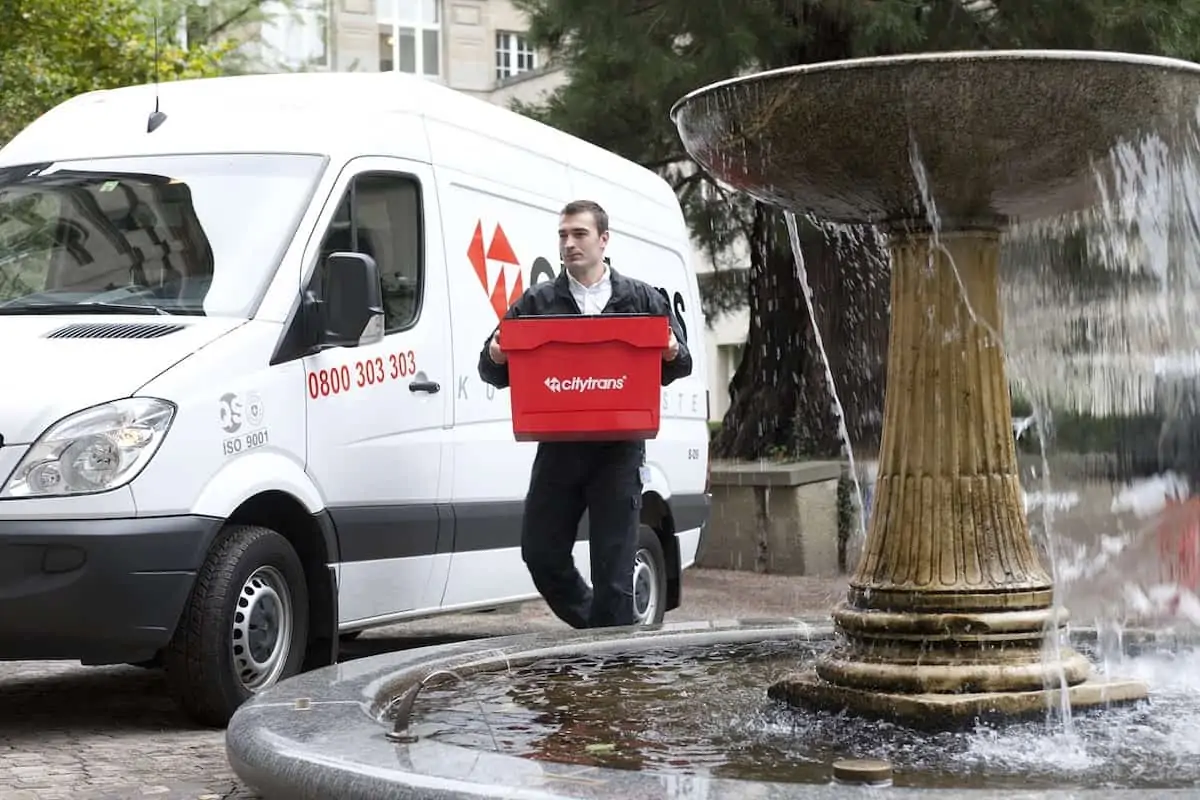Last mile deliveries are one of the major costs that companies bear when it comes to breaking down the costs of the supply chain as a whole. The most efficient way to deal with this would be implementing a last mile delivery platform. We will get to that in a bit as we talk about how to reduce last mile delivery costs.
According to a report by Capgemini, last mile deliveries account for over 41% of the overall supply chain costs. Having determined that it becomes necessary that companies find ways to reduce last mile delivery costs.
Now that e-commerce is growing with each passing day and more people around the world are depending on the online modes of shopping, online brands need to pay special attention to their delivery options. Customers are increasingly becoming more and more impatient with regard to the delivery times and are also willing to pay extra if their product’s shipping can be expedited.
If you, as a business owner, neglect your delivery mechanics and systems because you cannot simply keep up with the rising costs of the last mile delivery, well, unfortunately, your customers are going to find another seller.
In the following couple of paragraphs, we will discuss in detail how to reduce the last-mile delivery costs and why do these costs matter so much.
Here are the six ways to reduce last mile delivery costs :
1. Laying out a definite masterplan
Planning is the first step to the optimization of costs for any dynamics of business and it is not only valid for lowering your last mile delivery costs. You must have heard time is money; and well, it really is. Every minute of time that you save has a compounding effect over time which yields lower costs.
McDonald’s very foundation was on the basis of saving the consumer’s time. They put in place a plan where their consumers – no matter in what volume they visit the store- should be able to come in and get out of the outlet in under 5 minutes with their order in hand.
In terms of last mile deliveries, you can try and ensure that the entire dynamics of stacking the products in the trucks on the prior night; and right to the point where it is delivered is well-planned and executed. If every person involved in this flow is well-aware of what their individual role is, there will be less friction and less confusion – resulting in products getting out of the warehouse much quicker.
2. Optimized routing and mapping
So you have now ensured that the products get out of the warehouse in time and with efficiency, but what about when they are on the road?
If the routes of the day are not definitely laid out in advance, you are at a high risk of shelling out a lot of money on fuel and also of incomplete deliveries. This is a huge, vicious circle you might find yourself stuck in which will only suck in more and more cash each day, also with more and more unsatisfied customers each day. By routing, you can set a target for your drivers, have them take the most efficient routes between the multiple stops they need to make – eventually saving a lot of fuel costs and also compounded time each day.
By partnering with a last mile delivery execution partner like FarEye, you onboard professionals that have the knowledge and know-how around expedition planning, routing, and other processes, ridding you of the labor and worry thereof.
3. Automation of the dispatch process
The time spent each day on dispatching and assigning deliveries to your drivers might not look like a big deal day to day. However, if you calculate the time spent on this task over a period of time, you would then be facing a serious problem there.
As your business picks up, you will start to receive more and more orders than the previous day. Auto-dispatch technology provided by Far Eye is what helps you cut labor cost and time then. With this auto-dispatch technology, you can automatically assign drops to drivers, sending the right driver to the right house with each delivery – without the need for manual human intervention.
4. More flexible delivery options
You might be led to believe that by providing more delivery options you’re increasing your costs but in reality, it is quite the opposite. With flexible delivery options, you let the consumer pick between different ratios of delivery speed, convenience, and also the price that they pay for the product as a whole.
When you let the customers tell you a genuine time when they really can receive the products you automatically are making sure that the product will be received by the intended recipient without fail. You also earn some brownie customer-service points.
Look at the pioneers in the market for example. Amazon offers a 1-day delivery as well as a no-rush delivery option even to their Prime members; if expedited deliveries were not making the profits, the mechanism would have been halted a long time ago.
You can always make sure that you provide multiple options to customers and let them pick a slot that they really ‘need’ the product in. Besides, if the customers are incentivized (eg. free shipping or some kind of cashback for opting for the no-rush delivery option), they will anyway pick the slot that is less expensive for you.
More options in terms of the offered time slots do require a lot of coordination and technological solutions, however, it also throws the ball in your court.
5. Keeping consumers informed (Live tracking and updates)
The world today is about instant messaging and instant gratification; people want to know and be updated about exactly what is happening and as a delivery operator, it becomes your responsibility to do so.
With Far Eye, you can offer your consumers all the real-time information they need on their package, also enhancing the overall customer experience. The customers will get updates on the status of their delivery right from when it is packed, to when it ships when it is on the way and also the predicted or the estimated date + time of delivery. Besides, they can also see the real-time locations of their drivers and can get in direct touch with them over the phone.
In a holistic view, this also ensures lesser delivery failures and it saves your drivers the stress/frustration of driving to someone’s house and not finding them there available to receive the package.
6. Verification of deliveries through electronic proofing
By partnering with a last mile delivery execution professional, you can obtain an electronic proof with each successful delivery. This helps because-
- You get a clear, factual record of each delivery made, along with the details of the driver who made the said deliveries
- You get the records of the person who signs the delivery and also where exactly the delivery was dropped if the intended recipient was not available
This is particularly helpful because the dubious consumers cannot deny a delivery after actually having received a package; and also, the drivers can collect the necessary information like that of barcodes, photo-proofs, signature-proofs without paperwork and wasting too much time. This also advocated the contactless side of deliveries which is a priority in the times of the pandemic.
All in all, as an end result, this vital collected information can also help you identify the roadblocks and make your operations more streamlined.
Final Takeaway to Reduce Last Mile Delivery Costs
Even if you follow each of the techniques that we have mentioned in the post above it is obvious that you will still have some unexpected last-minute contingencies that might slow your supply chain process. For example, the truck’s tire can go flat or perhaps, the traffic lights might not be in order that particular day, ruining the flow of traffic on the roads and slowing your driver’s speed.
You cannot ever predict what is going to happen on the actualization day and you also cannot change what has to happen. The pandemic is the best example here!
However, these techniques help when put in place because they help you influence and control your operations on a good day- which are always more in number than the days when the rains are pouring or the skies are gloomy!
FAQs: Last Mile Delivery and Rising Cost: 6 Techniques to Reduce Last Mile Delivery Costs
- What is last mile delivery?
Last mile delivery is defined as the process of the movement of products from point A, the warehouse, or the origin, to point B, the final delivery destination of goods. The final delivery destination is the address for where an order has been placed. The purpose of last-mile delivery is the optimization of the entire delivery process, in order to make the delivery as soon and as quickly as possible. - Why is last mile delivery so expensive?
One of the primary reasons for last-mile delivery being so expensive is that it involves a lot of human intervention. If you compare this segment of the supply chain, it has the largest chunk of human involvement as the drivers are supposed to go door-t-dor and deliver the packages. However, this intervention can be controlled and influenced through technology and by onboarding last mile delivery execution professionals like Far Eye. - What is the first mile delivery?
As the name suggests, first mile delivery is the first step of the logistic supply chain system. This is the stage where the package leaves the merchant’s warehouse and is pushed to the other stages of the supply chain. - Is last mile delivery profitable?
Last mile delivery is not profitable unless the entire supply chain is optimized. As per reports by Leigh David, last mile delivery profits could decline by as much as 26% in a period of three years if the optimization process is not put in place.


 EBOOKS HERE
EBOOKS HERE